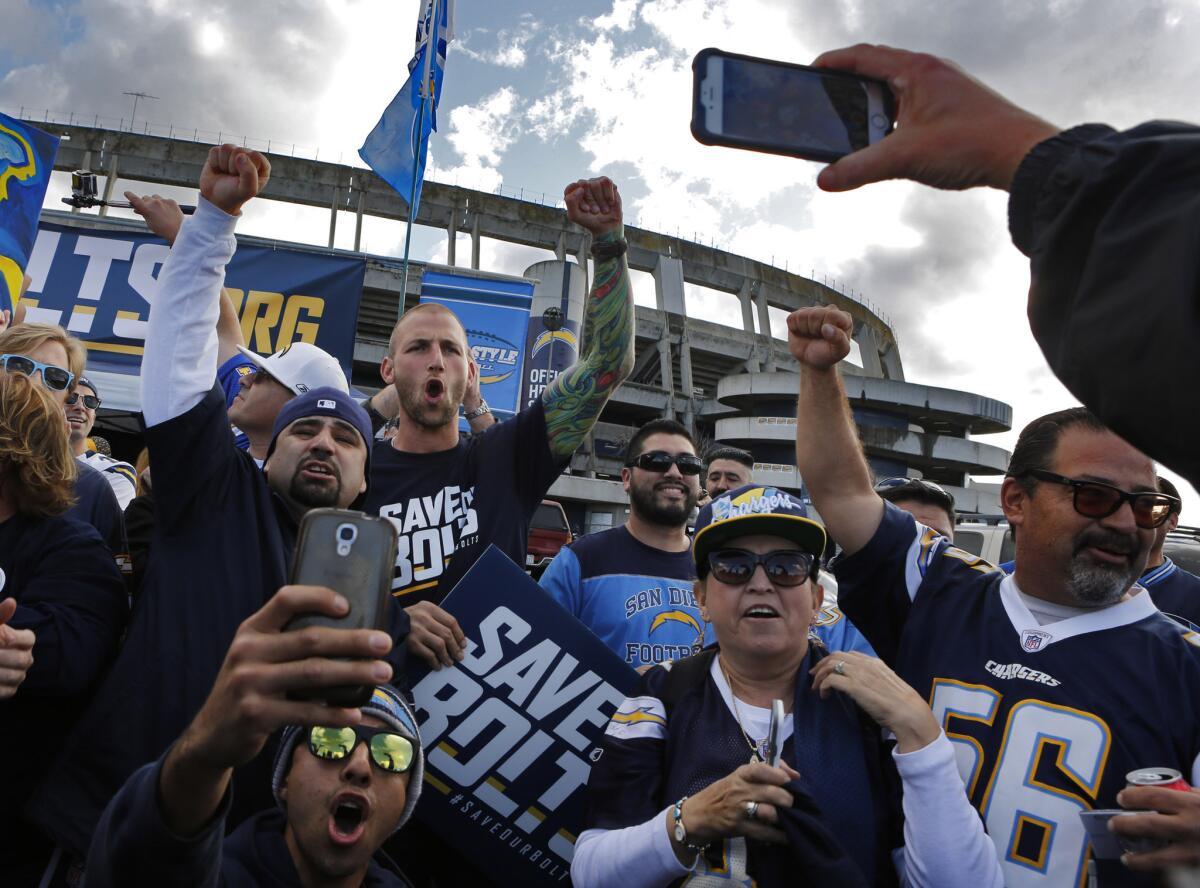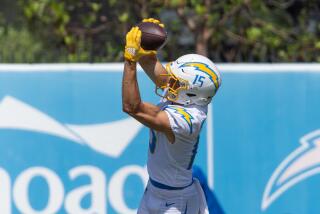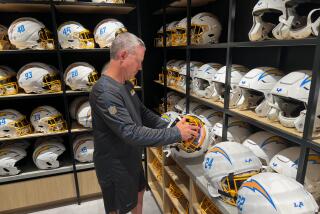Advisory group picks Mission Valley for proposed San Diego NFL stadium

San Diego has taken a step toward keeping the Chargers â but team officials arenât likely to be satisfied by it.
The Citizens Stadium Advisory Group, assembled by Mayor Kevin Faulconer, unanimously selected Mission Valley over downtown as the preferred location for a Chargers stadium.
Noting the Mission Valley site has been home to the Chargers for nearly 50 years, Faulconer said Wednesday: âI know we can make it work for decades to come. Now that theyâve recommended a site, I look forward to the group continuing to move expeditiously on developing a fair and responsible financing plan for a new stadium.â
Faulconer wants a financing plan from the advisory group by the end of May, and then hopes to put the proposal on the ballot in 2016.
The Chargers declined comment on the recommendation, but are not particularly pleased by it, according to an individual familiar with the thinking of club officials but not authorized to speak publicly on the topic.
Last month, the Chargers and the Oakland Raiders announced they have teamed to construct a stadium in Carson if they cannot get deals for new venues in their current cities by the end of the year. The Chargers have said that if the Raiders get a stadium and they donât, they are prepared to move forward on a Carson stadium on their own.
The Chargers anticipated that the task force would choose the Mission Valley location. People who run downtown San Diego hotels are not supportive of a stadium in their immediate neighborhood. There are two major reasons. First, those hotel managers favor a contiguous convention center, as opposed to a convention center in one spot and a stadium down the street. And second, if the convention center and stadium were to be combined, they say, that could cause scheduling issues because conventions are booked years out, and the NFL schedule is released just months before the season.
The Chargers expect the city will soon propose a stadium that is âarbitrarilyâ hundreds of millions of dollars less than the teamâs estimate, the source said, and will overestimate the amount of money the team can generate from the sale of personal-seat licenses.
Qualcomm Stadium, the teamâs current home, is in Mission Valley. In 2005, the Chargers proposed building a stadium on that 166-acre site, along with retail and residential development surrounding it. Team officials estimated that project would have cost $450 million for the stadium â $25 million more than the one the Arizona Cardinals were building at the time â plus an additional $200 million for infrastructure, such as raising the site, building more freeway offramps and a bridge over an adjacent river for improved access. At the time, the Chargers said they would privately finance the stadium but were asking for the city to give them 60 acres.
Ten years later, the Chargers now say a stadium and infrastructure would be roughly twice as expensive, and, relative to 2005, real estate isnât as valuable. From the clubâs perspective, the housing and retail density that would be required on the site to generate enough revenue to finance a stadium would be overwhelming.
Whatâs more, getting the necessary entitlements to build a residential development â as opposed to just a stadium â could take five years or longer, time the Chargers might have had in 2005 but donât feel they have now.
Former Chargers and NFL executive Jim Steeg â who is on the volunteer, nine-member task force â said the selection of the site is an encouraging first step in the complicated process of finding a stadium solution in San Diego. He said the Chargers are a big part of the equation, but a venue could serve many other events as well, including the Poinsettia Bowl, concerts, international soccer and high school championship games, as well as Super Bowls and possibly college football championship games.
âIt feels like weâre finally moving forward,â said Steeg, who, after 26 years as an NFL executive, worked for the Chargers for six years. âUntil now, it always felt like we were going uphill.â
Steeg said there is âno silver bulletâ in terms of helping pay for a stadium, and financing a venue would require creatively cobbling together several revenue streams.
Follow Sam Farmer on Twitter @LATimesfarmer
Times staff writer Tony Perry contributed to this report.
More to Read
Go beyond the scoreboard
Get the latest on L.A.'s teams in the daily Sports Report newsletter.
You may occasionally receive promotional content from the Los Angeles Times.











